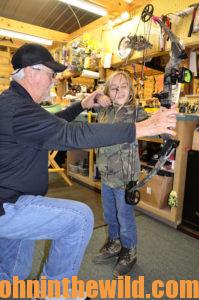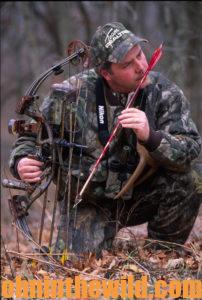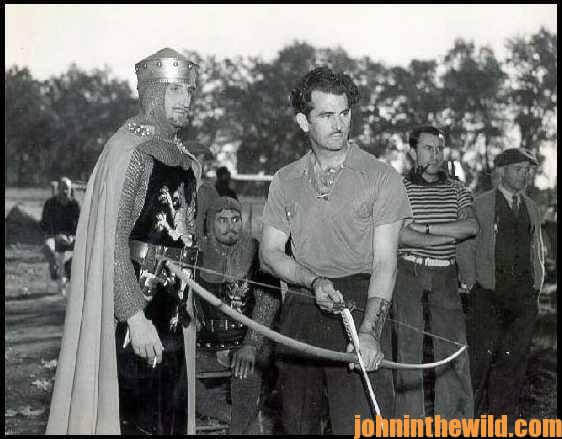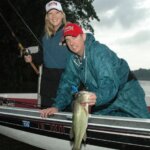 Editor’s Note: Since the days of Robin Hood and William Tell, hundreds of years have passed, millions of deer have been hunted, and thousands of hours have been invested in bowhunting technology. Archers today may feel a kinship to a particular kind of bow that’s been developed through the years, with their equipment reflecting their bowhunting heritage. The bowhunter is not simply a hunter, but is a stylist who matches his bow to his style of hunting, to his philosophies and beliefs of what bowhunting should be, and to what he feels is the best way for him personally to take deer. Bowhunting has become so diversified as a sport, that today the archer has many different options as to the kind and style of bow he’ll select, and the way he’ll hunt. What kind of bow is best for you, and what type of hunting will most satisfy you? This week, we’ll look at several different kinds of bows, their advantages and disadvantages, the styles of hunting they represent, and the types of archers who choose them.
Editor’s Note: Since the days of Robin Hood and William Tell, hundreds of years have passed, millions of deer have been hunted, and thousands of hours have been invested in bowhunting technology. Archers today may feel a kinship to a particular kind of bow that’s been developed through the years, with their equipment reflecting their bowhunting heritage. The bowhunter is not simply a hunter, but is a stylist who matches his bow to his style of hunting, to his philosophies and beliefs of what bowhunting should be, and to what he feels is the best way for him personally to take deer. Bowhunting has become so diversified as a sport, that today the archer has many different options as to the kind and style of bow he’ll select, and the way he’ll hunt. What kind of bow is best for you, and what type of hunting will most satisfy you? This week, we’ll look at several different kinds of bows, their advantages and disadvantages, the styles of hunting they represent, and the types of archers who choose them.
The Bow:
If the beginning hunter is of average stature and strength, many bows will be best for him. Generally speaking, most beginners don’t need to start with the more-expensive bows, but rather the medium-priced bows. Since all of these will take deer effectively, before a hunter spends a lot of money on equipment, he needs to be sure he’s going to enjoy it. If he does fall in love with the sport and determines that he wants a more-expensive bow, by that time he’ll have enough shooting experience in hunting and shooting to know exactly which bow he prefers.
Generally, there’s not much difference in how bows shoot, regardless of how they’re priced. The price of the bow is more often determined by the cosmetics of the bow and the extra gadgets that are put on it, not how well it shoots. A sportsman can spend a lot of money on his first bow and not have any better bow to learn on than if he had bought a far less expensive one.
Draw Length and Pull:
Always check your draw length and the weight of the bow that you most comfortably can pull before purchasing a bow. Draw length is the most-important factor in choosing the right bow for the hunter. To check your draw length, pull several-different bows with various draw lengths. Make sure you can pull the bow all the way back and anchor your shot on the corner of your mouth. This positions the string just beside the eye to help you aim and shoot better. If you can’t comfortably bring the string back to the corner of your mouth and hold it there, then most likely the draw length is too short. If you pull the string back, and it comes past the corner of your mouth at full draw, the draw length is too long.
Draw length determines arrow length. Choose an arrow that protrudes at least 1/2-inch to 1-inch past the front of the bow, to make sure you’ll have adequate broadhead clearance. Then the bowhunter won’t accidentally bump the broadhead on the front of the bow – even if he gets excited and attempts to pull the bow back further than it’s supposed to be drawn.
T o check for proper draw weight, pull bows of different weights to determine what you can pull without having to strain or be uncomfortable. Choosing a draw weight that can be held comfortably, and then increasing the weight as the novice becomes stronger, is much better than having him fighting a bow that’s too heavy for him to draw. A beginner must understand that he doesn’t need to shoot with the heaviest draw weight he possibly can pull, because the strain will cause him to shoot inaccurately. The average hunter should initially be able to pull about a 55-pound compound. Once he becomes stronger, he should then be able to pull 60 to 65 pounds comfortably.
o check for proper draw weight, pull bows of different weights to determine what you can pull without having to strain or be uncomfortable. Choosing a draw weight that can be held comfortably, and then increasing the weight as the novice becomes stronger, is much better than having him fighting a bow that’s too heavy for him to draw. A beginner must understand that he doesn’t need to shoot with the heaviest draw weight he possibly can pull, because the strain will cause him to shoot inaccurately. The average hunter should initially be able to pull about a 55-pound compound. Once he becomes stronger, he should then be able to pull 60 to 65 pounds comfortably.
The Quiver:
Because loosely-carried arrows are dangerous – even if they don’t have broadheads on them – all beginners need to buy quivers. Most hunters favor the types of quivers that bolt into the sides of their bows and easily can be taken off their bows, once they get into their tree stands.
The Arrow:
Once you determine the arrow length you need and the poundage you’ll be pulling, look at some charts online to see what spine most appropriately matches the draw length and weight of bow you plan to shoot. (Spine refers to the stiffness of the arrow). The archer usually will have several types of arrows to choose from that will be spined to fit his draw length and weight.
To learn more about bowhunting, check out John E. Phillips’ book, “Bowhunting the Dangerous Bears of Alaska” in Kindle and Print Versions at http://amzn.to/16ayVM0
Tomorrow: More Things to Consider when Choosing a Bow for Hunting
















